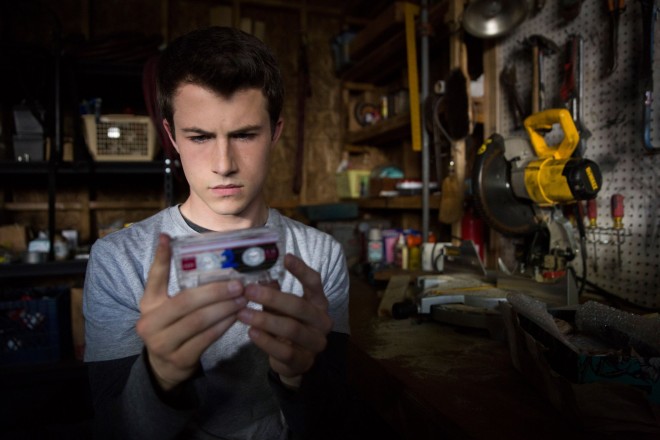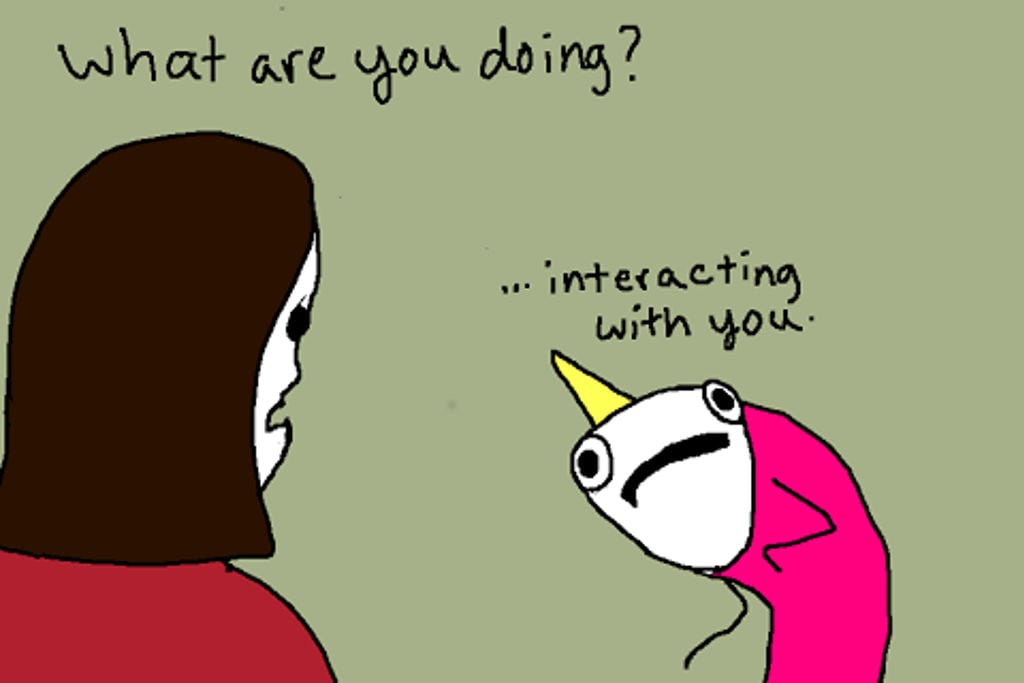Does ’13 Reasons Why’ Do More Harm Than Good On Teen Suicide?
"You don’t need to see a dead body to understand the realities of suicide."

This post discusses suicide as well as plot elements of 13 Reasons Why, including the final episode.
–
It’s one of the more ghoulish premises for a TV show you could think of: a teenage girl, Hannah (Katherine Langford), recounts why she took her own life over a series of 13 cassette tapes. Clay (Dylan Minnette), a teenage boy with an ambiguous relationship with her (Are they friends? Star-crossed lovers? Co-workers at their afterschool job at the movies?), listens on and becomes understandably distraught.
13 Reasons Why is one of Netflix’s latest, addictive offerings; it’s told over 13 episodes and based on Jay Asher’s best-selling novel of the same name. The story oscillates between the narrative Hannah weaves, and the impact her death has had on her school community, including ensuing legal action by Hannah’s parents against the school. Not only does Hannah record the tapes about the events that led up to her suicide, she also makes arrangements to have the tapes delivered to each person implicated in the story.
Her story is powerful. It describes bullying, abandonment, sexual assault, rape culture, stalking, manipulation, drunk driving and more. Hannah’s intention seems to be to blame and haunt those involved .“Do not take me for granted,” she says. “Not again”.
Youth suicide (and the issues surrounding this particular case) is an important topic. So many young people who are struggling will be attracted to this show. As I’ve experienced myself, there’s something about constant thoughts of death that makes you seek out characters going through the same thing. Given the vulnerability of some viewers, creators have a responsibility to make their representation of suicide ethical. 13 Reasons Why has both good and bad points in this regard.
Depicting youth suicide isn’t a problem per se, but it comes with risks. Young people are more prone to contagion than adults — that is, when someone they know attempts suicide, they’re at a higher statistical risk of doing so themselves. At the same time, silence doesn’t help anybody. A lack of discussion around the topic leaves people in the dark to the reality of distress, or potential avenues to address it.
To reduce the likelihood of suicide contagion, Mindframe recommends that reporters do not make explicit reference to the method a person may have used to take their own life. Research has shown that graphic and/or sensational portrayals of method can increase suicide risk among audiences. It’s also recommended to contextualise the story with information about risk factors, and to avoid stereotyping those involved. A Vienna-based study has found that suicide rates decreased considerably after media outlets committed to ethical reporting guidelines.
You don’t need to see a dead body to understand the realities of suicide.
The ethics of 13 Reasons Why aren’t so clear-cut. The show depicts the range of issues Hannah goes though (mental illness is not one, although not everyone who takes their own life has a diagnosed mental illness), and talks about potential warning signs. It’s also appropriate that Hannah’s narrative is tested throughout the series. She thinks that her suicide is an inevitability given her circumstances — she has clear “reasons” — but it isn’t. In fact, part of the tragedy of Hannah’s situation is that she may not have even fully understood the nature of some things.
Hannah claims, for instance, that she saw a boy rip up her heartfelt letter. But weeks after her death, he still had it, and indeed, continued to carry it around with him. How many heart-crushing details did she get wrong? Mired in rage and misery, she was trapped in her limited perspective. While the people around her were assholes, most didn’t want to hurt her. There were people who would have tried to help her if they realised she needed it.

The series wrestles with what seems to be a paradox: as an act, suicide is not logical but it can be understandable. Hannah’s “reasons” aren’t as solid as she believes, but equally 13 Reasons Why shows that kindness instead of cruelty or indifference can make a huge difference. This message important and ultimately speaks against suicide and for compassion.
The biggest disappointment of 13 Reasons Why came in the final episode, where Hannah’s death is gratuitously shown. The scene is sickening and overly salacious, and carries with it all the worst risks of bad representation. It also undermines the story.
Until this point, 13 Reasons Why did a remarkable job of depicting what’s invisible but real with the gravitas it deserves. Hannah’s continued presence, despite the fact that she is dead, is palpable. The grief that her parents, classmates, and teachers go through is embedded in the series’ fabric. Pain is shown to be nuanced and often secret. People always have more going on than you think. Intangible things — like stories, like outrage, like despair, like legacy — have a real life of their own. You don’t need to see a dead body to understand the realities of suicide.
Despite this huge problem, the series is largely compelling. Binge-watching is facilitated by enticing episode endings and the compulsion to find out what happened. Watching it, I cared for Hannah — as well as (most of) her subjects, especially Clay who seems to be the most deeply moved by the tapes’ content. The story does lag in its depiction of the present day and some elements are repetitive but others, like the court case Hannah’s bereaved parents mount against the school, are impactful.
Overall, 13 Reasons Why is a powerful, if problematic, take on distress. If it makes viewers embrace compassion, all the better. But this representation of suicide is a dangerous one. It might be too salacious for its — and our — own good.
-
If you need support, both Lifeline on 13 11 14 and the Kids Helpline on 1800 55 1800 offer 24-hour assistance. For further information about youth mental health, both Headspace and Reach Out can provide guidance. You can also talk to a medical professional or someone you trust.
–
Erin is a freelance writer and reviewer based in Sydney. Her work has appeared in Ramp Up, The Age, Voiceworks, Birdee, and others. Her twitter handle is @xerinstewart.
